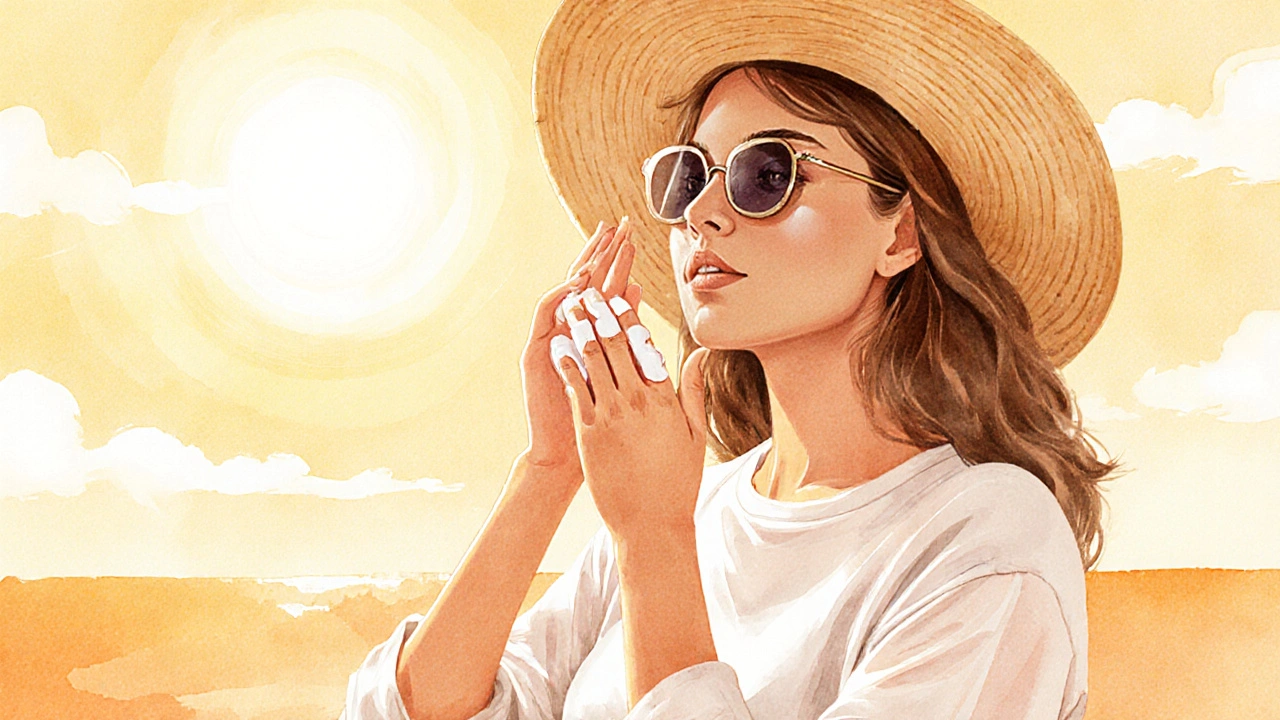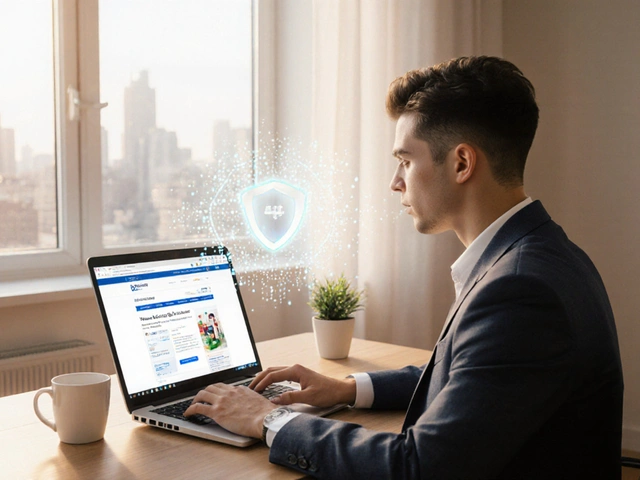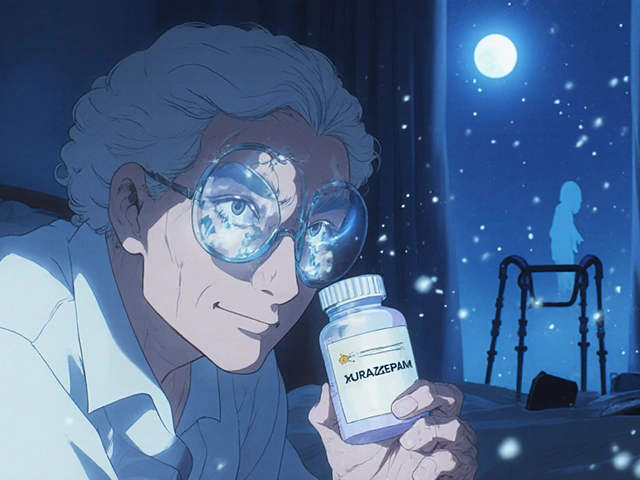
Health October 15, 2025
Freckles vs Age Spots: Identify & Manage Skin Pigmentation
Freckles vs. Age Spots Identifier
Answer a few questions about your skin spots to determine if they're likely freckles or age spots.
When you look in the mirror and notice small brown dots, you might wonder whether they’re freckles or age spots. Both are common forms of skin pigmentation, but they differ in cause, appearance, and what they signal about your skin’s health. Understanding those differences helps you choose the right care routine and decide when a dermatologist’s opinion is needed.
Key Takeaways
- Freckles are genetically driven, appear early in life, and are linked to sun exposure.
- Age spots (also called liver spots) develop later, result from cumulative UV damage, and may indicate skin aging.
- Both conditions involve melanin, but their distribution and risk factors differ.
- Simple sun‑protection habits can prevent new spots and fade existing ones.
- Consult a dermatologist if spots change in size, shape, or color.
What Are Freckles?
Freckles are tiny, flat, tan or light‑brown macules that usually measure 1‑2mm. They form when melanocytes produce slightly more melanin in response to ultraviolet (UV) radiation, creating a concentration of pigment in the upper skin layers. Freckles often appear in childhood or early adolescence, especially on fair‑skinned individuals, and are most common on the face, shoulders, and arms.
What Are Age Spots?
Age spots, also known as liver spots or solar lentigines, are larger (5‑10mm or more), flat, brown or black patches that develop on sun‑exposed skin after years of cumulative UV damage. They typically emerge after age 40, although prolonged sun exposure can trigger them earlier. Age spots are a sign of skin aging rather than a hereditary trait.

Key Biological Players
Both freckles and age spots revolve around melanin, the pigment that gives skin its color. Melanin is produced by melanocytes and serves as a natural sunscreen by absorbing UV radiation. Over‑production or uneven distribution leads to visible pigmentation.
Sun exposure and ultraviolet (UV) radiation are the main triggers. UV‑B rays stimulate melanin synthesis, while UVA penetrates deeper, accelerating skin aging and the formation of age spots.
Different skin types react uniquely. The Fitzpatrick scale ranges from TypeI (very fair, always burns) to TypeVI (deeply pigmented, rarely burns). Lighter skin types are more prone to freckles, whereas all skin types can develop age spots with enough sun exposure.
When pigmentation becomes uneven, it falls under the broader category of hyperpigmentation. This umbrella term includes melasma, post‑inflammatory hyperpigmentation, and other conditions.
Comparing Freckles and Age Spots
| Attribute | Freckles | Age Spots |
|---|---|---|
| Typical onset | Childhood‑early teens | Mid‑40s onward (earlier with heavy sun) |
| Size | 1‑2mm | 5‑10mm or larger |
| Color | Light tan to brown | Medium brown to black |
| Primary cause | Genetic predisposition + UV‑B | Cumulative UVA/UV‑B damage |
| Location | Face, shoulders, arms | Forehead, cheeks, hands, back of hands |
| Risk of malignancy | Very low | Low, but new or changing spots warrant check |
| Typical treatment | \nSunscreen, gentle bleaching creams | Topical retinoids, chemical peels, laser therapy |
Why It Matters for Your Skin Health
Freckles themselves are harmless, but they reveal a skin type that reacts strongly to UV radiation. If you’re prone to freckles, you’re also at higher risk for sunburn and, over time, could develop age spots or even early signs of photo‑aging.
Age spots signal that the skin’s repair mechanisms are wearing thin. While they’re not cancerous, they can mask underlying changes such as loss of collagen or elastin, which contributes to wrinkles and texture loss.
Both conditions benefit from a proactive approach: protect, monitor, and treat as needed.

Prevention and Daily Care
- Apply broad‑spectrum sunscreen every morning. Choose SPF30‑50, reapply every two hours outdoors.
- Wear protective clothing: wide‑brim hats, UV‑blocking sunglasses, and long‑sleeved shirts when the UV index is high.
- Seek shade between 10am and 4pm, when UV‑B rays peak.
- Use antioxidants (vitaminC, niacinamide) in your moisturizer to combat free‑radical damage.
- Consider periodic skin checks with a dermatologist. Early detection of atypical lesions can save lives.
Treatment Options
If existing spots bother you aesthetically, several evidence‑based treatments can lighten them.
- Topical agents: Hydroquinone, azelaic acid, and kojic acid inhibit melanin production. These work best on freckles and early age spots.
- Retinoids: Prescription‑strength tretinoin speeds up cell turnover, fading age spots over weeks.
- Chemical peels: Glycolic or lactic acid peels remove the pigmented outer layer.
- Laser therapy: Fractional lasers target melanin directly, offering quicker results for stubborn age spots.
Always patch‑test new products and follow a dermatologist’s guidance, especially when using potent lighteners.
When to See a Dermatologist
Most freckles and age spots are benign, but watch for red flags:
- Rapid growth or change in color.
- Irregular borders or multiple colors within a single spot.
- Any spot that bleeds, itches, or becomes painful.
If you notice any of these signs, schedule a skin examination promptly. Early biopsy can rule out melanoma or other skin cancers.
Frequently Asked Questions
Can freckles turn into age spots?
Freckles and age spots share the same pigment, but they form through different mechanisms. A freckle won’t directly become an age spot, though long‑term sun exposure can cause new age spots to appear alongside existing freckles.
Are age spots a sign of skin cancer?
Age spots themselves are benign, but any new or changing pigmented lesion should be evaluated. Skin cancer often presents with asymmetry, border irregularity, color variation, diameter over 6mm, or evolution (the ABCDE rule).
What’s the best sunscreen for preventing both freckles and age spots?
A broad‑spectrum sunscreen that blocks both UVA and UV‑B is essential. Look for “UVA‑PF” or “PA+++” ratings, with SPF30‑50. Mineral filters (zinc oxide, titanium dioxide) are gentle for sensitive skin.
Can diet affect the formation of freckles or age spots?
A diet rich in antioxidants-vitaminC, vitaminE, and polyphenols-helps mitigate oxidative stress from UV exposure, potentially slowing pigment formation. However, diet alone won’t prevent spots without sun protection.
Is it safe to use over‑the‑counter bleaching creams on age spots?
Mild over‑the‑counter agents (e.g., 2% hydroquinone, azelaic acid) are generally safe for short‑term use on age spots. For deeper or stubborn discoloration, a dermatologist can prescribe stronger formulations or procedural treatments.
By recognizing the tell‑tale signs of freckles and age spots, you can tailor your skin‑care routine, protect against future damage, and seek professional advice when needed. Consistent sun safety and mindful treatment choices keep your complexion looking healthy at any age.
Write a comment
Items marked with * are required.






9 Comments
Mangal DUTT Sharma October 15, 2025 AT 00:01
Hey everyone 😊, I totally get how confusing it can be to tell freckles apart from age spots, especially when the sun has been relentless lately. It’s such a common concern, and you’re definitely not alone in this skin‑care journey. The article does a great job outlining the key differences like size, onset age, and color, which really helps demystify things. 🌞 Remember, freckles tend to be smaller, appear early in life, and are often linked to genetic factors, while age spots usually show up later and signal cumulative UV damage. If you’re noticing new dark patches, it might be time to double‑check your sunscreen routine and maybe schedule a quick dermatologist visit just for peace of mind. Stay protected out there, and keep sharing your experiences – we all learn from one another! 🙌
Gracee Taylor October 21, 2025 AT 21:21
I appreciate the thorough breakdown; it’s refreshing to see a balanced view that doesn’t demonize sun exposure but encourages sensible protection. The prevention tips like broad‑spectrum SPF and antioxidants are spot‑on, and I’ve found that pairing sunscreen with a good vitamin C serum makes a noticeable difference. It’s also reassuring that freckles themselves are harmless, yet a reminder that they signal a skin type that reacts strongly to UV, so extra vigilance is wise. Overall, the article strikes a good middle ground between scientific detail and practical advice.
Leslie Woods October 28, 2025 AT 18:41
Freckles and age spots are both pigmented but they form in different ways
Shana Shapiro '19 November 4, 2025 AT 16:01
When you glance at the mirror and see those specks, it can feel like a silent narrative etched upon your skin, each freckle a fleeting memory of youthful sunshine, each age spot a testament to the relentless passage of time. The contrast between the delicate, sun‑kissed freckles of adolescence and the bold, weathered age spots of maturity is nothing short of poetic, reminding us that our bodies chronicle our stories in pigment. Embracing this duality allows us to honor both the innocence of youth and the wisdom of age, all while taking proactive steps to protect and nurture our skin. Let us not shy away from these marks, but rather understand them, care for them, and celebrate the journey they represent.
Jillian Bell November 11, 2025 AT 13:21
It’s worth pondering why the skincare industry pushes endless creams while the real culprit-systemic UV exposure-gets downplayed; perhaps there’s a hidden agenda to keep us dependent on pricey treatments. They love to market “brightening serums” as if the solution lies in a bottle, yet the ancient wisdom of shade and simple mineral sunscreens is brushed aside. Remember, the very same corporations funding dermatology research also lobby against stricter UV regulations, so staying vigilant about what you put on your skin is a subtle form of resistance. In the end, true protection may come from questioning the narratives handed to us and opting for the most natural, proven defenses.
Lindsey Bollig November 18, 2025 AT 10:41
First off, kudos for putting together such a comprehensive guide on freckles and age spots.
As someone who’s helped a lot of folks navigate skin‑care, I can confirm that the distinction between these two types of pigmentation is not just academic but practical.
Freckles, being small and usually light‑tan, are largely a genetic response amplified by UV‑B, so they tend to pop up in kids and teens who love playing outdoors without sunscreen.
Age spots, on the other hand, are larger, darker, and stem from years of cumulative UVA damage, which is why they often appear after the forties or in people with a history of intense sun exposure.
The table in the article does a great job summarizing the key attributes-size, color, onset, and typical locations-making it easy to self‑diagnose.
However, self‑diagnosis is only the first step; a quick look in the mirror should be followed by a conversation with a dermatologist if anything looks off.
I always tell my patients to start with the basics: a broad‑spectrum SPF 30‑50 sunscreen applied every morning and re‑applied every two hours when outdoors.
Pair that with protective clothing-wide‑brim hats, UV‑blocking sunglasses, and long sleeves on high‑UV days-and you’ve got a solid defense.
In addition, incorporating antioxidants like vitamin C or niacinamide into your daily moisturizer can help neutralize free radicals before they cause pigment changes.
If you already have existing spots and they bother you cosmetically, topical agents such as hydroquinone, azelaic acid, or gentle retinoids can lighten them over several weeks.
For more stubborn age spots, I often recommend a chemical peel with glycolic acid or a fractional laser session, but only under professional supervision.
It’s crucial to patch‑test any new product and introduce one change at a time to monitor how your skin reacts.
Remember, consistency is key; you won’t see dramatic results overnight, but steady use of sunscreen and targeted treatments will gradually fade the discoloration.
Also, keep an eye on any spots that change in size, color, or texture-those are red flags that warrant an immediate dermatologist visit.
Lastly, stay educated: the more you understand the science behind melanin, UV radiation, and skin aging, the better you can tailor a routine that works for your unique skin type.
I hope this adds a helpful layer to what the article already offers, and feel free to reach out if you need personalized recommendations.
Daniel Buchanan November 25, 2025 AT 08:01
Thanks for sharing the article; it lays out the information in a clear way that anyone can follow. If you’re just starting to think about sunscreen, aim for a broad‑spectrum product with at least SPF 30 and reapply it every two hours when you’re outside. For existing freckles or age spots, consider incorporating a gentle retinoid at night to boost cell turnover, but start with a low concentration to let your skin adjust. Always do a patch test before applying new products to the whole face, and if you notice any irritation, stop and consult a professional. Remember, protecting your skin now can prevent many of these spots from getting worse later on.
Lena Williams December 2, 2025 AT 05:21
yo i read the piece and it kinda clicked i never realized how much uv can just stack up over years i mean freckles are like tiny reminders of the sun you had as a kid but age spots are more like a badge of honor from decades of outdoors lol just try to keep that sunscreen on, even if you think you’re just going out for a quick coffee it adds up and before u know it those spots get bigger so yeah, stay shaded and maybe try a vitamin c serum it’s cheap and does the trick
Sierra Bagstad December 9, 2025 AT 02:41
The article accurately distinguishes freckles as melanin clusters resulting from acute UV‑B exposure in genetically predisposed individuals, whereas age spots arise from chronic UVA‑induced melanocyte hyperactivity and dermal changes. This differentiation is essential because it informs both preventive strategies-such as broad‑spectrum sunscreen use-and therapeutic interventions, ranging from topical hydroquinone for early lesions to laser resurfacing for entrenched lentigines. Moreover, the inclusion of the ABCDE rule for melanoma vigilance reinforces the need for regular dermatologic examinations. Overall, the piece provides a well‑structured, evidence‑based overview suitable for both lay readers and professionals.